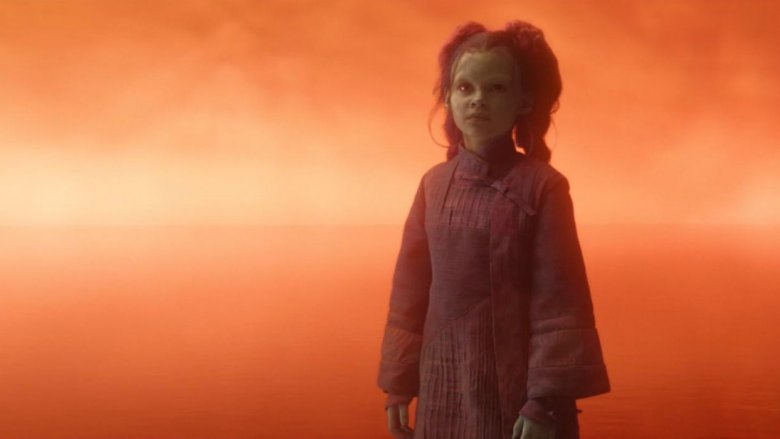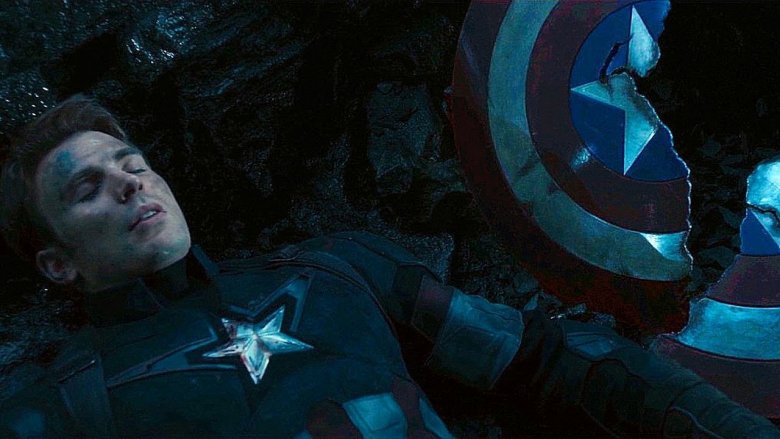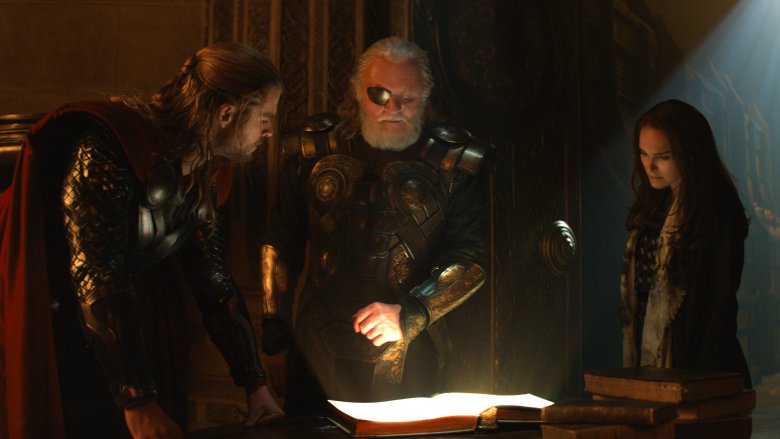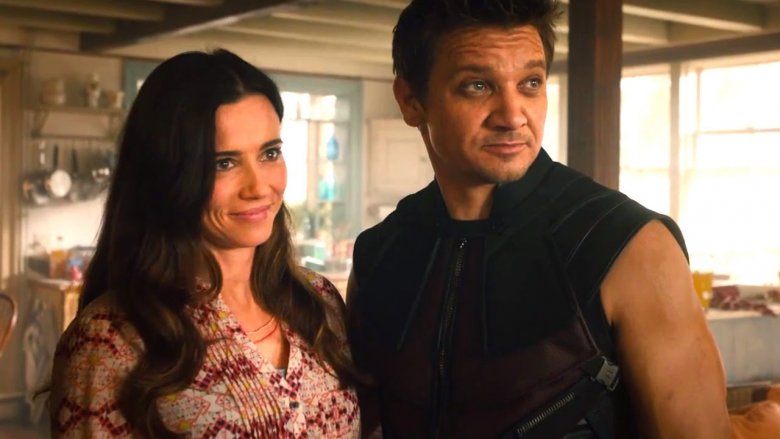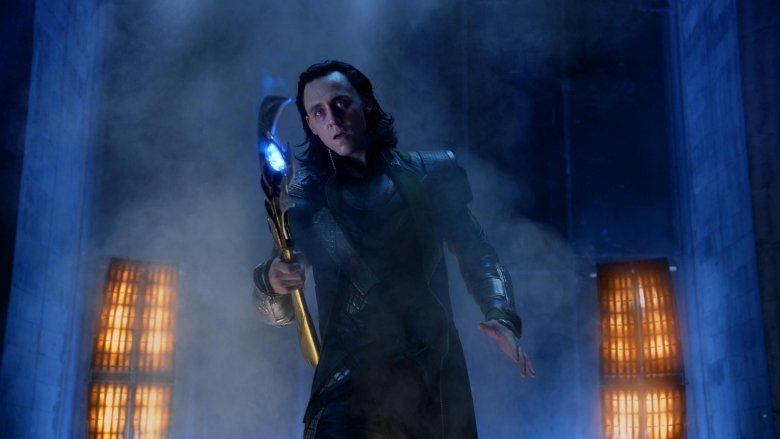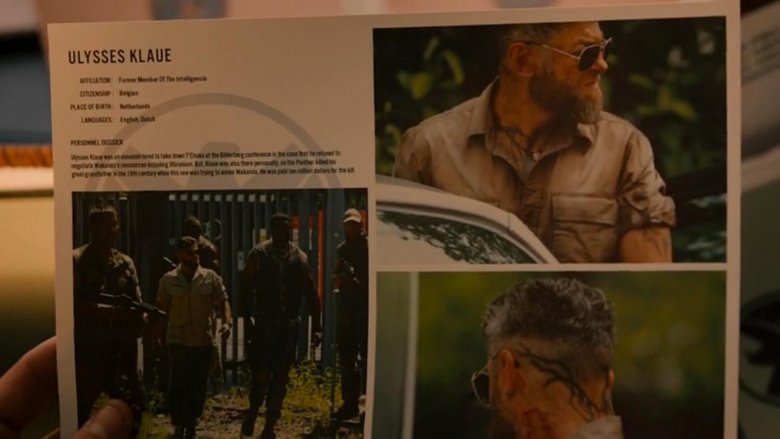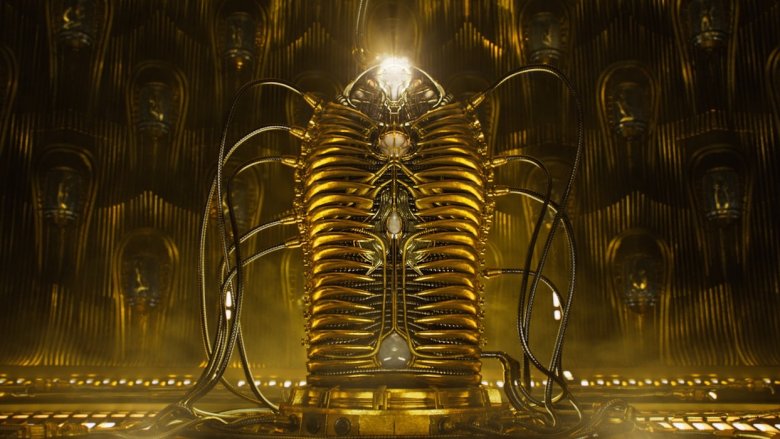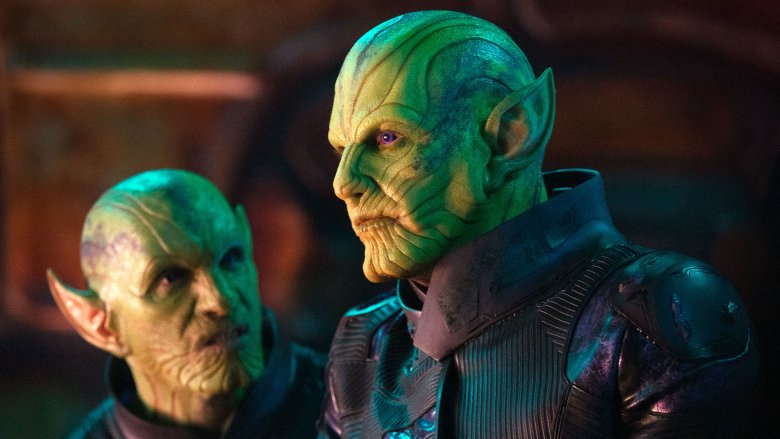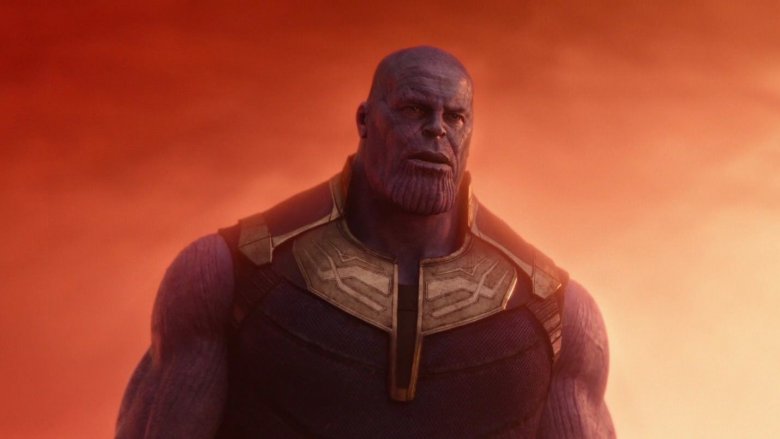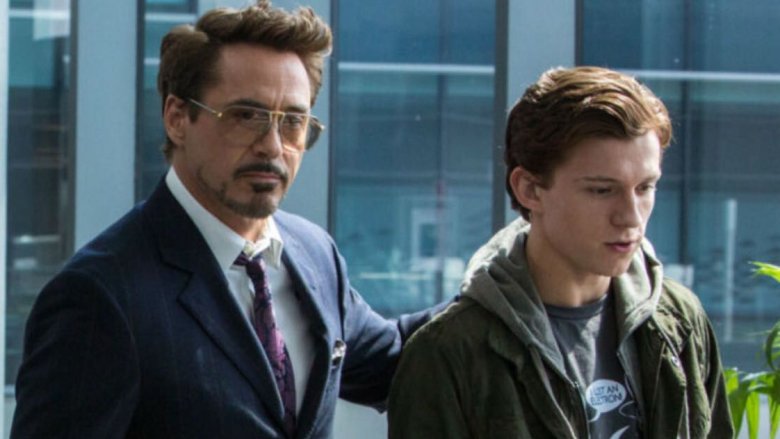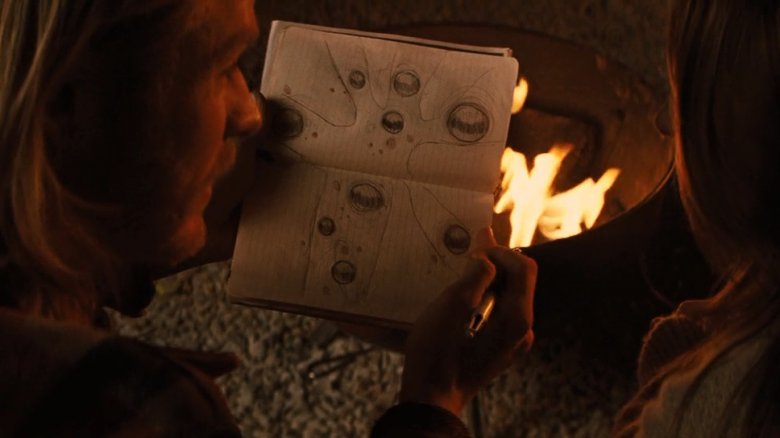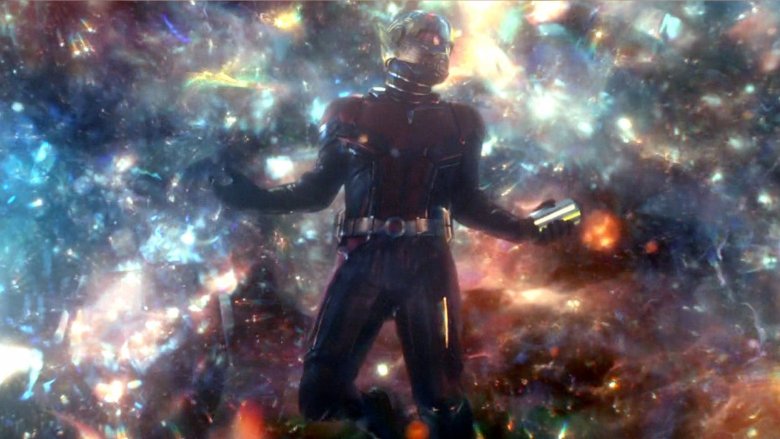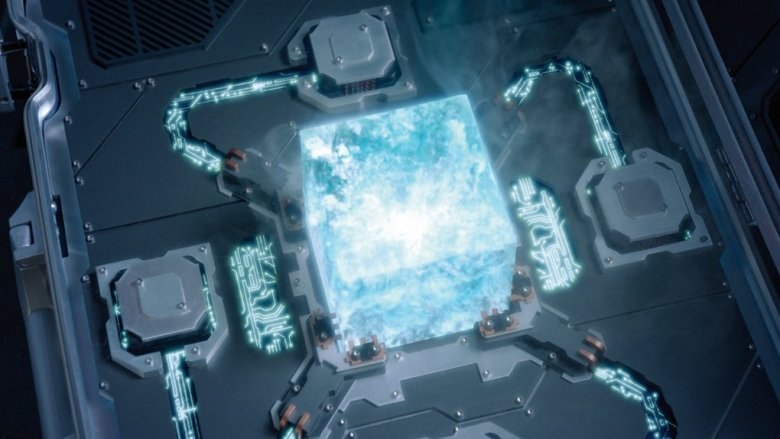MCU Scenes That Are More Important Than You Realize
Making all the stories in the Marvel Cinematic Universe work together has been a feat of creative genius. Writers and directors have the benefit of a wealth of source material to draw from, but it takes a lot of work to produce more than 20 films over a decade and to make them converge together in bombastic, crowd-pleasing crossover films. When the very first Iron Man was released back in 2008, we had no idea that the coming years would be filled with films that would later interweave seamlessly. But Marvel Studios did, and if you're sharp-eyed enough (read: nerdy enough), you might have noticed some hints and nudges throughout the years.
The filmmakers knew Thanos was coming long before we did. While we were still enamored with the idea of superheroes like Iron Man and Captain America, writers and producers were thinking about Infinity Stones. With little lines and scenes, they tried to clue us in to the bigger picture. There are moments throughout the whole of the MCU that go by in the blink of an eye, but are actually very important to the grand story of the films. We just didn't know it yet.
Tony's nightmare comes to life
It can be easy to forget that behind his high-tech armor and facade of sarcasm, Tony Stark is only human. He's not physically the strongest of the Avengers (that would be the Hulk) but he certainly has the strongest personality, which makes it easy to forget that he's fallible. Rather than being all wit and one-liners, Tony struggles with a feeling of powerlessness after the Battle of New York that we would never have associated with such a powerful figure.
In Iron Man 3, Tony has flashbacks to the black maw of the wormhole that he never thought he'd come out of. The knowledge of the reality of what's out there in space — namely civilizations with bigger, badder weapons — haunts him, plaguing him with PTSD flashbacks and nightmares. In Avengers: Age of Ultron, this fear of the danger that lurks in space and his feelings of powerlessness manifest themselves in the nightmarish hallucinations that Scarlet Witch subjects him to. Tony sees Cap, Thor, Black Widow... all his friends broken and dead. He couldn't save them.
This turns out to be a vision of the future, in a way. In Infinity War, as hard as he tries, Tony is unable to stop Thanos from getting the final Infinity Stone needed for the big Snap. He watches in horror as his friends fall around him, while he stands powerless.
The Aether in Thor: The Dark World
Okay, we probably can't convince you to watch Thor: The Dark World if you haven't already. And if you have watched it, a single viewing is probably enough. It's... not one of Marvel's best. The plot is a tangled web, the writing is blase, and Thor is kind of unbearable. But while The Dark World is among the worst of what the Marvel Cinematic Universe has to offer, it still has value, believe it or not. The movie, perhaps more than any other, does a phenomenal job of introducing the nature of the Infinity Stones and teasing their future importance.
Thor and his girlfriend, Dr. Jane Foster, are thrown into an eons-old conflict between Asgard and the Dark Elves of Svartalfheim. Long ago, the elves had sought to conquer the Nine Realms with the power of the Aether, a red-tinged force created from the Reality Stone. It was sealed away by Odin's own father, but it was unleashed when the Nine Realms aligned, and now it's infected Jane. They are only able to destroy the Aether when it is fused with Malekith, the leader of the Dark Elves, but the Reality Stone remains. In a post-credit scene, it is officially called an Infinity Stone, alongside the Tesseract. Because Asgard is already guarding the Space Stone, they send the Reality Stone to the Collector, who we find out has his own goal of collecting 'em all.
The introduction (and exit) of Hawkeye's family
Being a superhero isn't exactly your standard nine-to-five gig. You have to fight bad guys all over the world, face down death on countless occasions, and deal with overpowered co-workers who have anger issues (we're looking at you, Hulk). Keeping all this in mind, there's good reason as to why the Avengers aren't really the type to settle down and start families... except for Hawkeye. Clint Barton lives a double life: out in the world, he's a deadly archer and agent of S.H.I.E.L.D. At home, he's a husband and father. Or he was, if we're to assume the worst... and we are.
In Avengers: Age of Ultron, Clint surprised everyone (save for Auntie Natasha) by taking them to his homestead and safe house, where his wife and kids live. That's where he was holed up under house arrest during the events of Infinity War, explaining his notable absence from the film's posters. Now, in Endgame, he's back and he's no longer the Clint Barton that we knew. After the Snap, it appears that something in him snapped. No longer is he Hawkeye. He's now Ronin, a ruthless, tattooed assassin with a katana and nothing to lose. Remember that family we were lovingly introduced to in Age of Ultron? It's likely that they're gone now, leaving Clint a shadow of the man he was before.
The Mind Stone has been around for a while
The Tesseract, in some shape or form, has shown up in a number of Marvel films, serving as the MacGuffin in not one, but three movies. In Captain America, we learn it was originally brought to Earth by Asgard, only to be stolen by Nazis and HYDRA. Then, it was given to Project P.E.G.A.S.U.S. by Howard Stark with the goal of making a lightspeed engine, as revealed in Captain Marvel. It was then stolen by Loki in The Avengers, before it was taken back to Asgard, only to be stolen during Thor: Ragnarok by Loki. Again.
But there has been another Infinity Stone here all along. Loki's scepter is special for a reason, and not just because it matches his favorite horned helmet. This weapon, gifted to him by Thanos, isn't just any old alien weapon. It actually contains the Mind Stone, which is why it's able to be used for mind-controlling and generally nefarious purposes. Once Loki is carted away in chains to Asgard, S.H.I.E.L.D. studies the scepter and is able to discern that it had some kind of connection to the Tesseract. It is then stolen by HYDRA and used to give powers to unwilling test subjects (like Scarlet Witch and Quicksilver). When the Avengers get their hands on it again, Tony Stark and Bruce Banner discover that within the scepter... something is thinking. It's the Mind Stone, which is then used to create Vision in order to keep the power away from Ultron.
Wakanda has been in the background
Wakanda may be an isolated nation that hides its secrets from the world, but that doesn't mean we hadn't heard about it before Black Panther. We had heard about it several times, actually. Of course, Wakanda refuses aid from other countries and its people rarely venture outside of its borders. That's why it's a huge international incident when civilians, including Wakandan scientists on a goodwill mission, are killed in the crossfire between the Avengers and Crossbones' terrorist crew at the beginning of Civil War.
Captain America's shield is made from the strongest material in the world, vibranium. As a former weapons manufacturer, Tony Stark is aware that there's only one place to get vibranium: Wakanda. It is highly valued on the black market, where disreputable arms dealers like Ulysses Klaue operate. We meet Klaue just before he loses an arm during an encounter with Ultron in Age of Ultron. When we see him again in Black Panther, he's replaced the appendage with a robotic prosthesis, making him all the more dangerous. In short, the MCU was packed with references to Wakanda long before we first saw it for ourselves, deftly setting the stage for Black Panther.
The creation of Adam
Let's not forget how important the Guardians of the Galaxy series has been in tying together the plotline of the Infinity Stones. Despite taking place far, far away from Earth, the films have introduced key players and background in the struggle for the Stones. What's key too is how Guardians of the Galaxy Vol. 2 may have introduced the most powerful character in the MCU.
We're not talking about Ego, either. His power pales in comparison to the mighty force cocooned in golden pipes by the Sovereign. The second Guardians of the Galaxy film starts with Rocket doing what he does best — namely, stealing things. This draws the wrath of the Sovereign, who make it their mission to destroy the Guardians of the Galaxy. Failing to do so with conventional means prompts the Sovereign leader, High Priestess Ayesha, to create a new weapon — a new being, more powerful, more beautiful, and more capable of destroying the Guardians. She decides to name it Adam.
Adam Warlock is one of the most powerful characters in the comics. He helps to take down Thanos, is able to wield the Infinity Gauntlet, and has a deep connection to the Soul Gem. All of this sounds highly relevant to Avengers: Endgame. It turns out that it's a good thing that Rocket has such sticky fingers after all, because his theft might lead to the salvation of the universe.
The Skrulls are not the bad guys
The Marvel Cinematic Universe does a good job of introducing and explaining all the complicated, ages-old lore out there in space. People from Earth are called Terrans, the Nova Corps are intergalactic cops, and the Kree hate the Skrulls. This conflict has been around since the '60s, when the two races were first introduced in the comics. It turns out that originally, the Skrulls were pretty peaceful, but became hostile after being betrayed by the Kree. This origin story meshes well with the big plot twist of Captain Marvel.
In Captain Marvel, Carol Danvers is known as Vers, a member of the Kree. They're set up to be the good guys (noble warrior heroes) in the war with the Skrulls, who infiltrate planets and secretly take over. Fans going into Captain Marvel may have been a little confused, because the only Kree we'd really gotten to know in the MCU was Ronan the Accuser from Guardians of the Galaxy. Ronan was something of a rogue fundamentalist Kree who was enraged by the peace treaty between the Kree and Xandar.
Despite the Kree's declaration of nobility and peacekeeping, they've done some seriously shady things. Way, way in the past, the Kree captured humans and performed genetic experiments in order to make slaves and soldiers for their wars. These beings became the Inhumans and were relocated to the moon.
"What did it cost?"
After the big Snap, after Thanos achieves his ultimate goal, after countless worlds start crumbling into dust, the Mad Titan himself is taken to a red-tinged plane where nothing exists, save for a familiar-looking arch and the silhouette of a little girl. It's Gamora — the same Gamora that Thanos met when he killed half the people on her planet. She asks him what his victory cost, and a grim Thanos — not looking the least bit triumphant — replies, "Everything."
What does this mean? We know that it further emphasizes the fact that Thanos really did love Gamora, but this scene was more than just Thanos reminiscing, and it wasn't even a dream. In order to get the Soul Stone, Thanos had to give the soul of someone he loved. He sacrificed Gamora, and thus her soul was claimed by the Stone. With the power of the Infinity Stones, Thanos wiped out exactly half of the population of the whole universe, and so all those souls have to go somewhere. They go to the Soulworld, a pocket dimension in the Soul Stone itself.
Cap reminds Tony that we all need family
Tony Stark and Steve Rogers don't always get along. In fact, they're infamous for their disagreements that ultimately tear the Avengers as we know them in two. But that doesn't mean that they're not friends, and friends have each other's best interests at heart. During the events of Captain America: Civil War, that's what divides Iron Man and Captain America: each thinks he knows what's right for their super-powered friends.
Fast-forward to the end of the movie, wherein they have been able to punch the ever-loving heck out of each other and feel a little better. As complicated as the differences in their ideals are, they still support each other. Tony receives a package, and inside is a cell phone and a letter.
"Tony, I'm glad you're back at the compound. I don't like the idea of you rattling around a mansion by yourself. We all need family. The Avengers are yours. Maybe more so than mine." Steve writes that he will be there should Tony ever need him, but it's the line about family that weighs heavily on Tony's future. The post credit scene shows a young Peter Parker experimenting with web shooters, and in the following films we see that Spider-Man is something of an adopted son to Tony. Cap's words resonate even further considering that in Infinity War, Tony and Pepper talk about having kids. We all need family.
Thor introduces everyone to magic
When the first Thor movie was released in 2011, magic wasn't yet a part of the Marvel Cinematic Universe — just science. Tony Stark made a flying metal suit and an artificial intelligence so smart that it could backtalk him, which may seem like magic, but it was all just good old-fashioned engineering. Thor changed all that... kind of.
In a rather romantic scene with Dr. Jane Foster, Thor explains that what people have called "magic" is just the same as science where he comes from. Norse mythology interprets the Nine Realms as branches of the world tree, Yggdrasil, but we would think of them as planets. The rainbow bridge Bifrost creates wormholes in which Asgardians travel, and Asgardians themselves aren't gods so much as a super-powered race of aliens who just happen to look a lot like humans.
We didn't know it then, but this explanation paved the way for other realms (read: planets) with their own civilizations to come into play in the MCU. Asgardians were the first alien species introduced in the MCU, but later films would add the Chitauri, the Kree, the Skrulls, Xandarians, the Sovereign, and whatever the Grandmaster is.
Quantum Realm physics with Ant-Man
Here's another lesson in the fine line between the science and magic of the Marvel Cinematic Universe: the Quantum Realm. The Quantum Realm is actually a parallel dimension to our own, wherein everything is so small that time and space cease to have meaning. This itty bitty universe can only be accessed through the use of Pym Particles, which allow for matter to shrink and grow on an incredible scale, but it's harder to get out of the Quantum Realm than it is to get into it. Just ask Scott Lang.
Ant-Man was notably absent from Avengers: Infinity War. He was having his own adventure, which ended in disaster. During the mid-credits scene of Ant-Man and the Wasp, Scott is getting ready to return from the Quantum Realm when Thanos' big Snap happens. The people meant to get him out of being itty bitty have turned to ash and he's stuck. But apparently not for long, because he shows up at the front door of the Avengers' complex, as seen in the very first Endgame trailer.
So far, it is a mystery as to how he escaped. The only way out of the Quantum Realm is via science... or maybe magic. Is that how Ant-Man escaped? If he now has access to the Quantum Realm, that'd be a real convenient place for a Mad Titan time out.
P.E.G.A.S.U.S. has been hidden in plain sight
In Captain Marvel, the Skrulls root around a bit inside Carol Danvers' head in order to find out where her former mentor, Dr. Wendy Lawson, worked. This takes some trial and trippy errors as they rewind her memories in order to catch sight of a badge that reads "P.E.G.A.S.U.S." As you might have guessed from the acronym, there's a connection between P.E.G.A.S.U.S. and S.H.I.E.L.D. Specifically, the purpose of the project is to study the capabilities and mysterious powers of the Tesseract. With something so powerful and otherworldly, it's no surprise that everyone wants in on it. Thus, Project P.E.G.A.S.U.S. is a joint venture between S.H.I.E.L.D., NASA, and the U.S. Air Force.
The events of Captain Marvel clarify this, but if you were particularly sharp-eyed during a viewing of 2012's The Avengers, you may have already known about it. In the opening scene, soldiers, S.H.I.E.L.D. agents, and scientists alike are scrambling around the Joint Dark Energy Mission Facility, which houses the Tesseract. This is right before Loki crashes the party, but before that you can spot a sign on the wall that mentions S.H.I.E.L.D., NASA, and Project P.E.G.A.S.U.S. This is the operation that Mar-Vell, a.k.a. Wendy Lawson, had been working on before perfecting the lightspeed engine.
